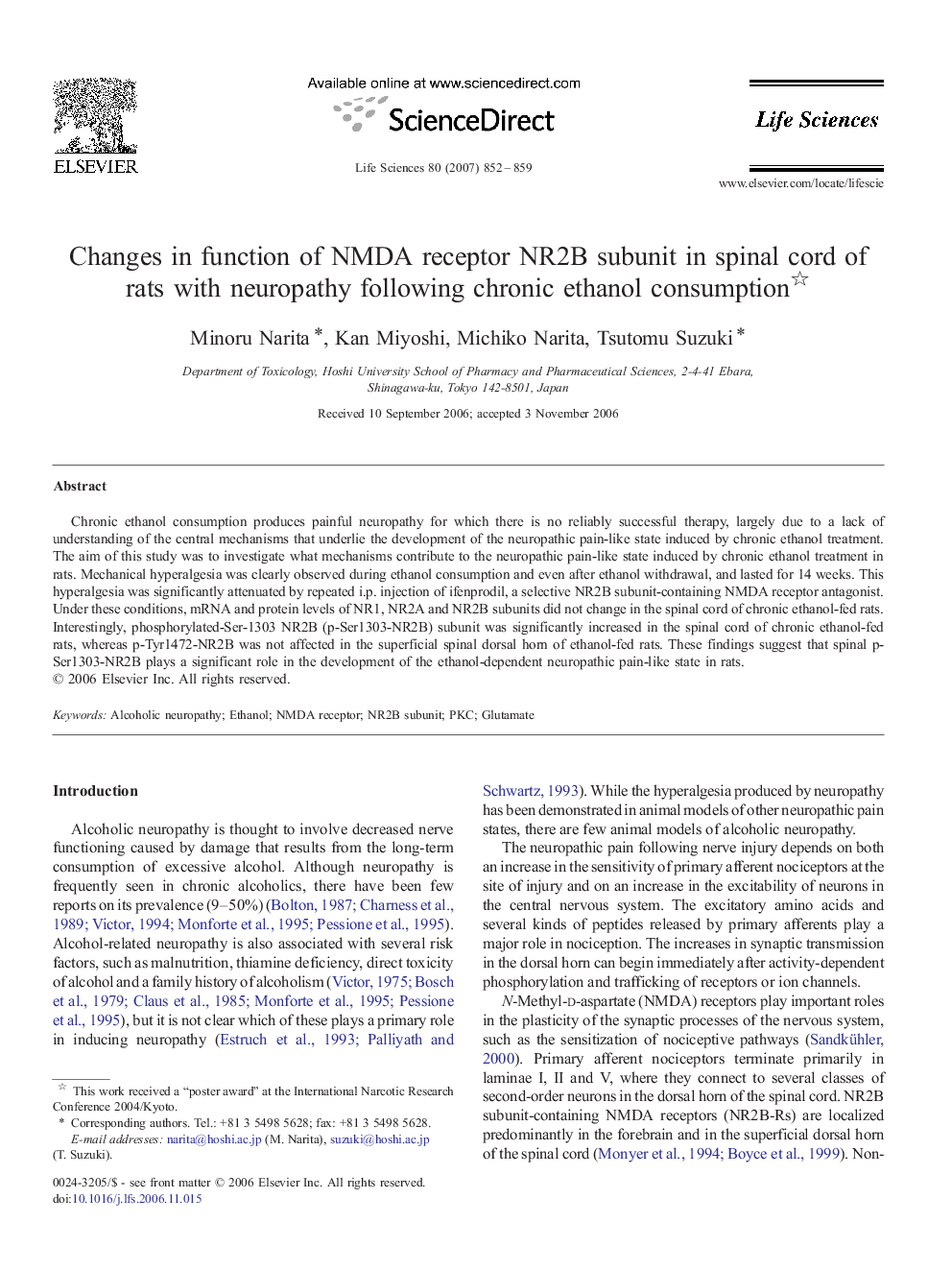| Article ID | Journal | Published Year | Pages | File Type |
|---|---|---|---|---|
| 2553921 | Life Sciences | 2007 | 8 Pages |
Abstract
Chronic ethanol consumption produces painful neuropathy for which there is no reliably successful therapy, largely due to a lack of understanding of the central mechanisms that underlie the development of the neuropathic pain-like state induced by chronic ethanol treatment. The aim of this study was to investigate what mechanisms contribute to the neuropathic pain-like state induced by chronic ethanol treatment in rats. Mechanical hyperalgesia was clearly observed during ethanol consumption and even after ethanol withdrawal, and lasted for 14Â weeks. This hyperalgesia was significantly attenuated by repeated i.p. injection of ifenprodil, a selective NR2B subunit-containing NMDA receptor antagonist. Under these conditions, mRNA and protein levels of NR1, NR2A and NR2B subunits did not change in the spinal cord of chronic ethanol-fed rats. Interestingly, phosphorylated-Ser-1303 NR2B (p-Ser1303-NR2B) subunit was significantly increased in the spinal cord of chronic ethanol-fed rats, whereas p-Tyr1472-NR2B was not affected in the superficial spinal dorsal horn of ethanol-fed rats. These findings suggest that spinal p-Ser1303-NR2B plays a significant role in the development of the ethanol-dependent neuropathic pain-like state in rats.
Related Topics
Health Sciences
Medicine and Dentistry
Cardiology and Cardiovascular Medicine
Authors
Minoru Narita, Kan Miyoshi, Michiko Narita, Tsutomu Suzuki,
